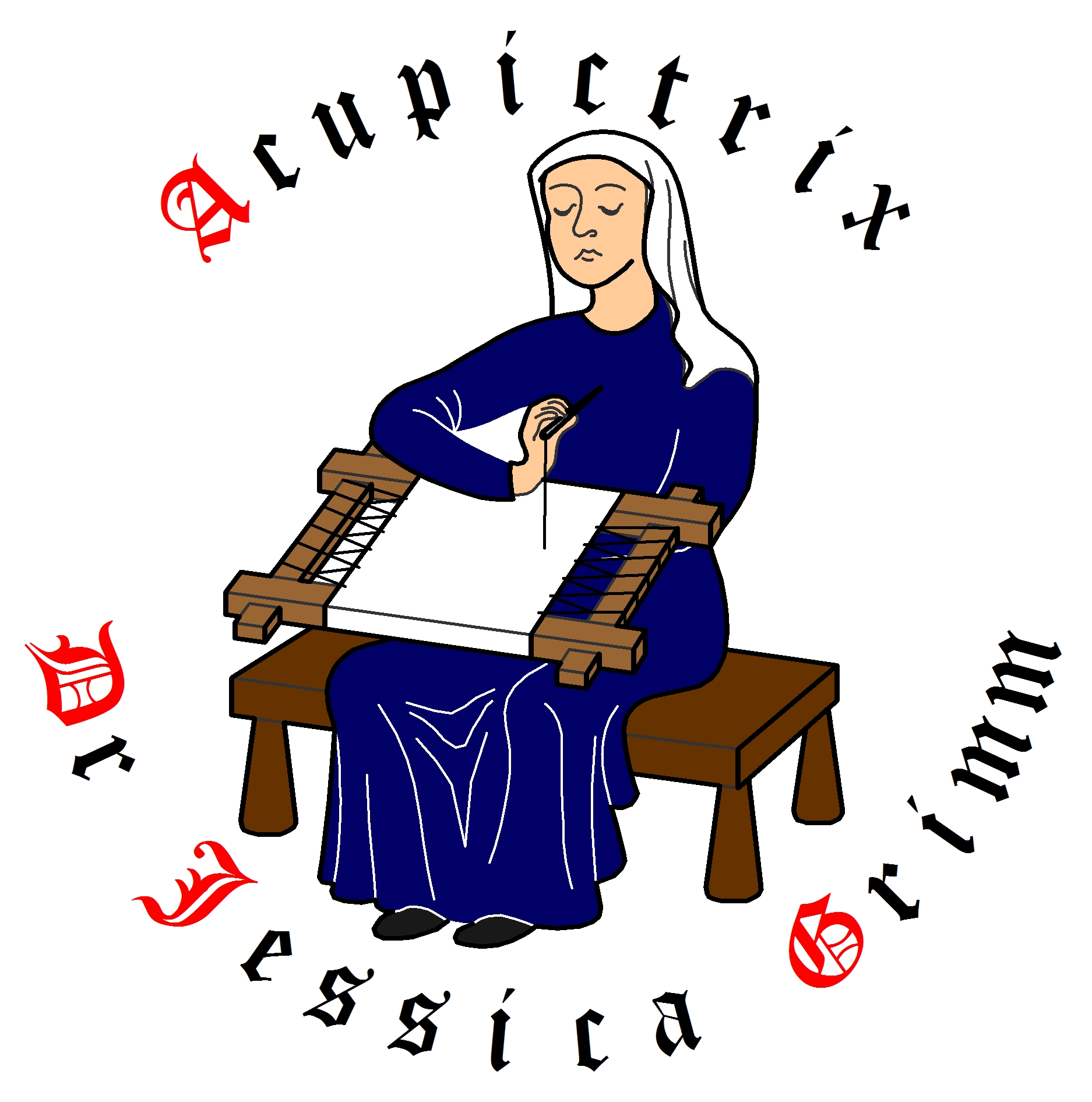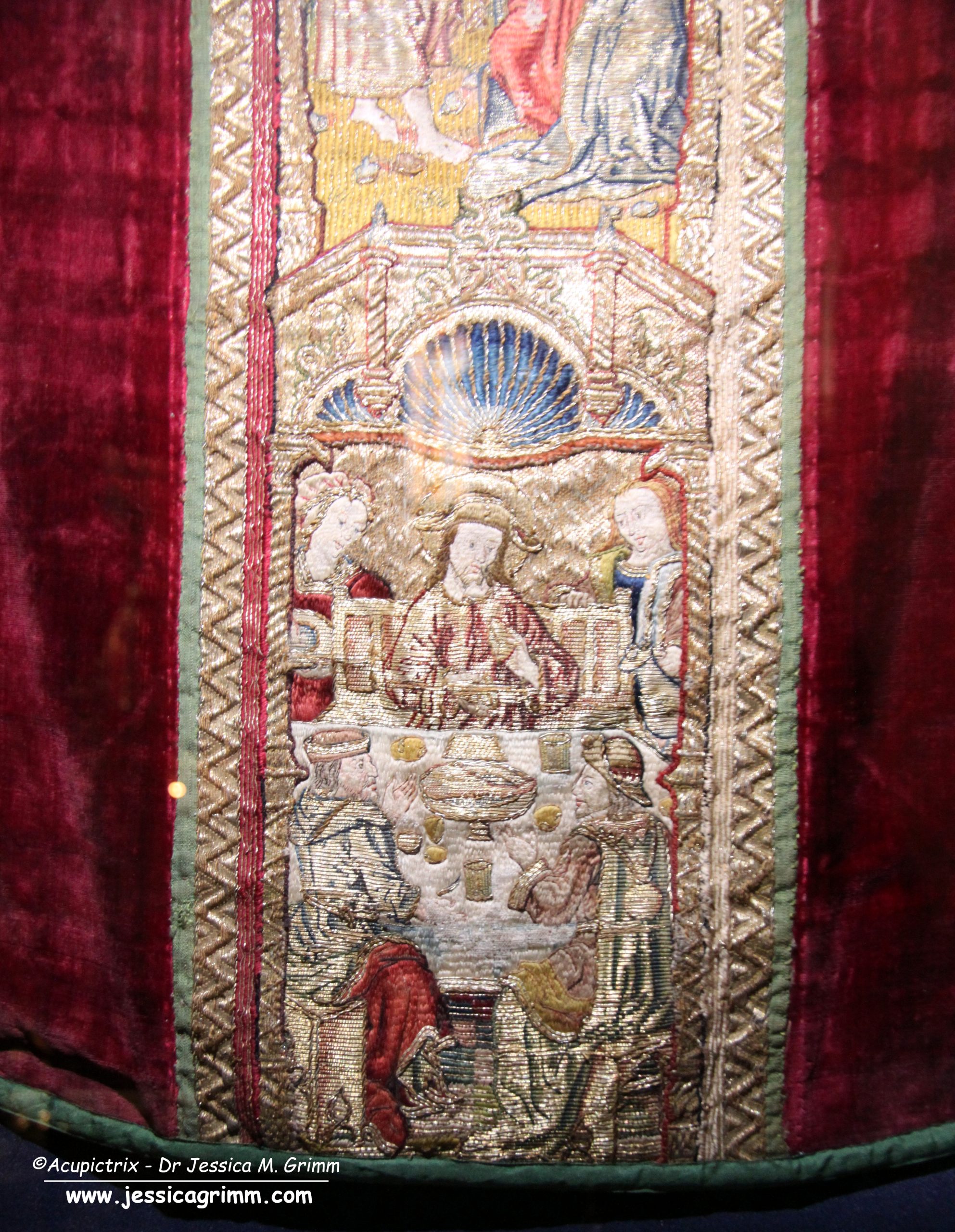Your basket is currently empty!
Category: Period
-
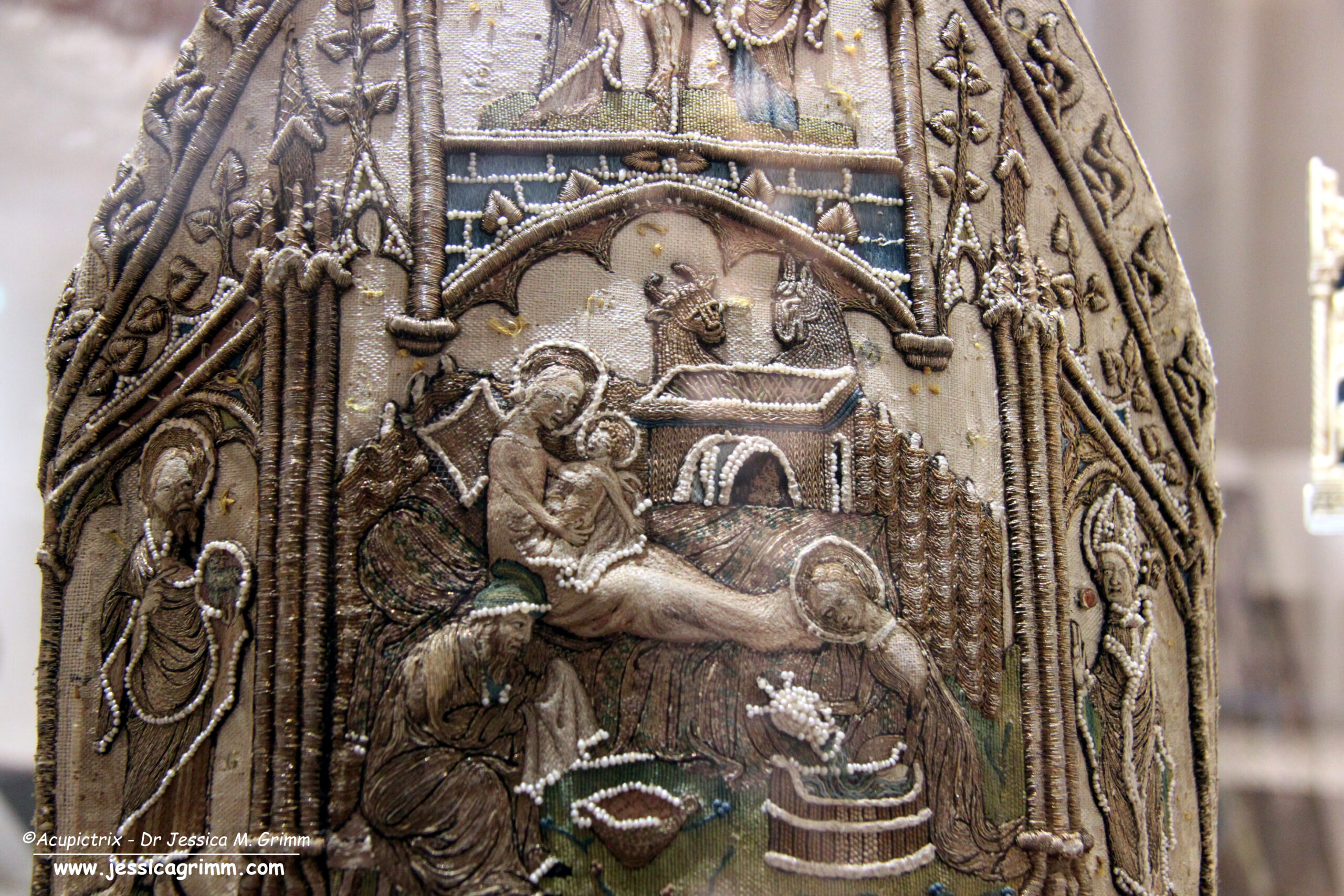
Last week, we looked at the pearl-embroidered mitre of St Isidoro, which dates to the second quarter of the 14th-century. Today’s pearl-embroidered mitre is slightly younger and dates to the last quarter of the 14th-century and was likely made in Paris. It was once housed in Sainte-Chapelle, the 13th-century royal chapel in the heart of…
-
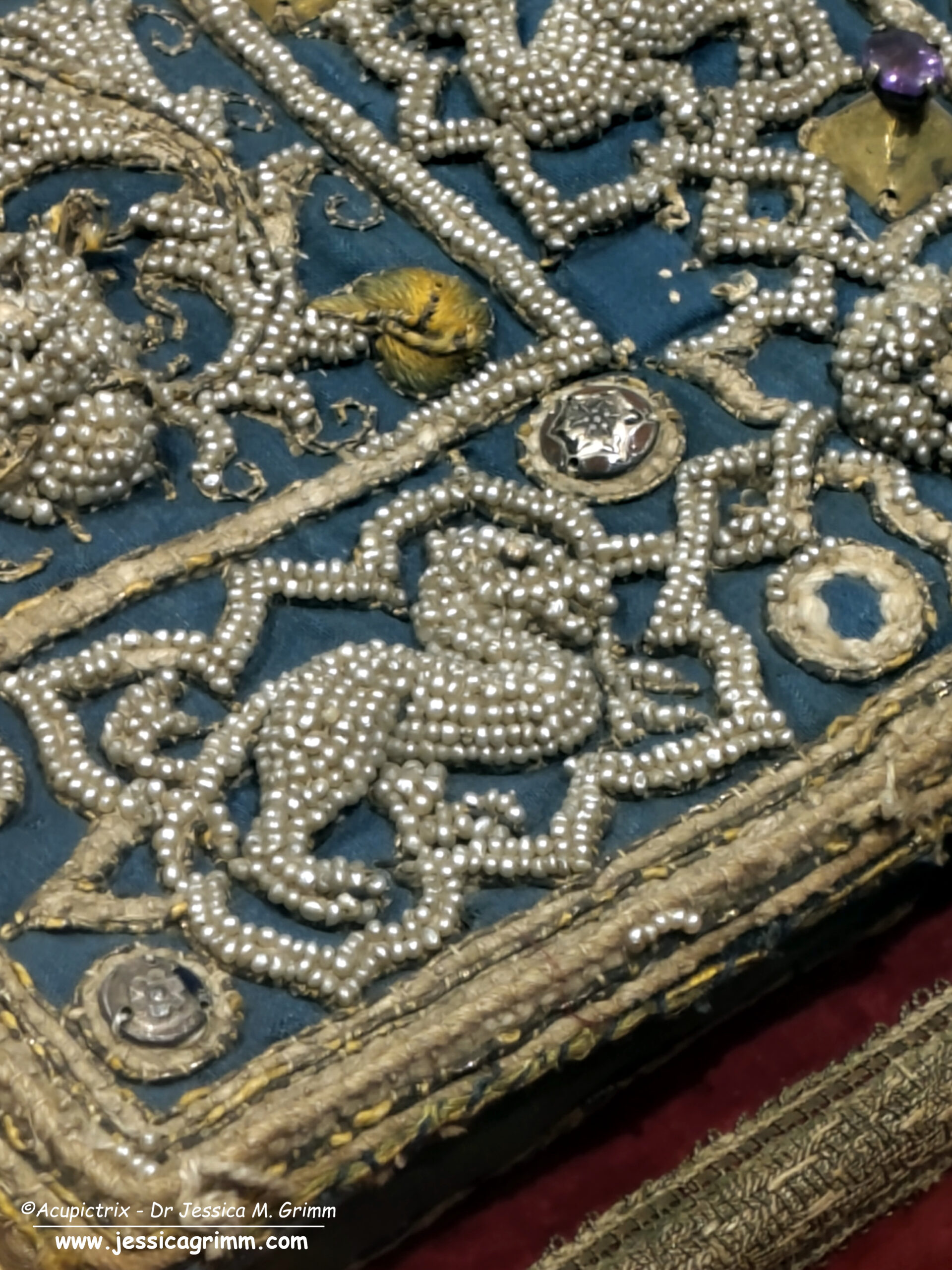
The Saint Stefano church, one of the churches of the seven-churches complex in Bologna, houses a spectacular pearl-embroidered mitre from the second quarter of the 14th century. The iconography is not your average Christian fare with dragons, birds, and lion masks amidst foliage. It is, in fact, so rare that no comparable pieces are known.…
-
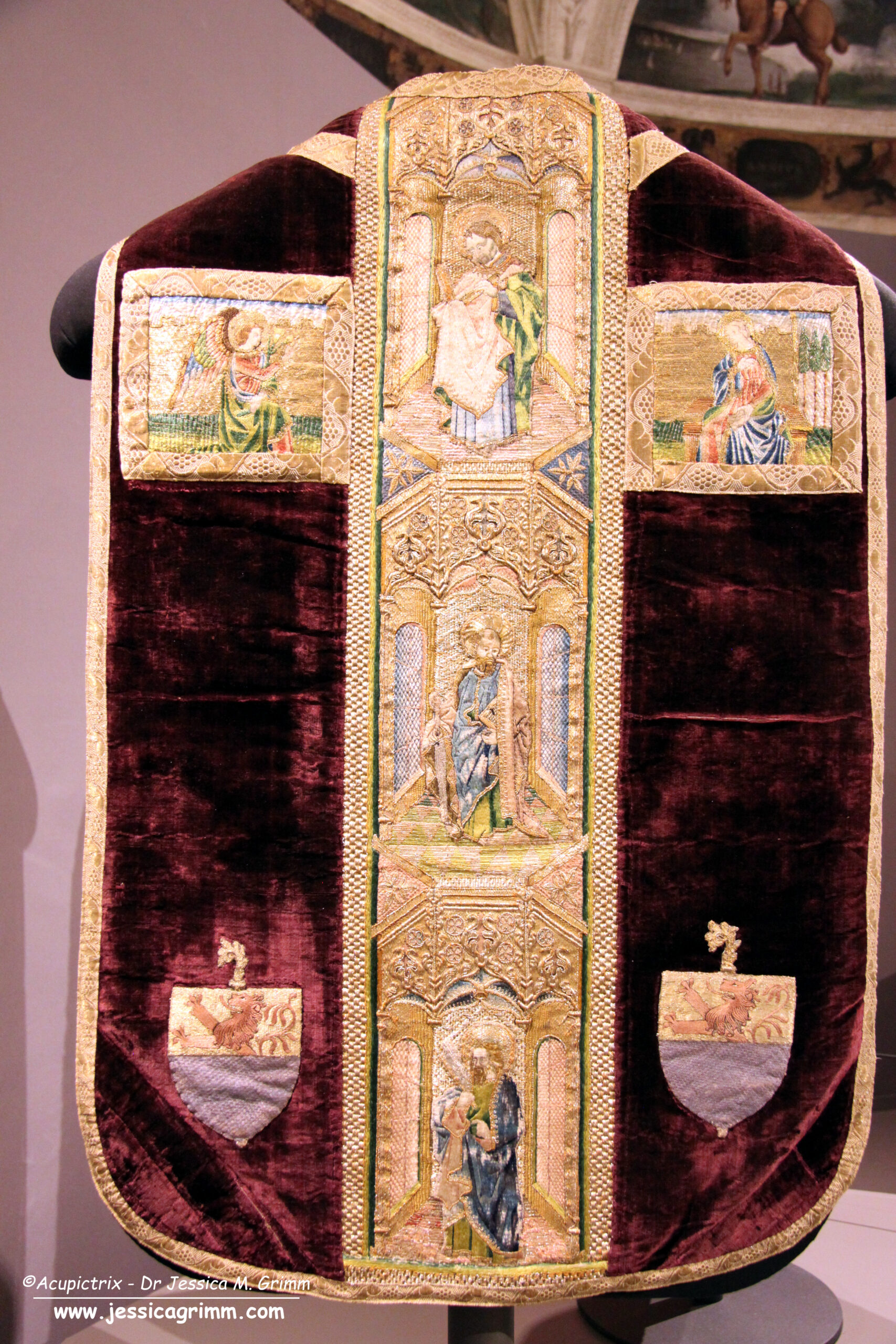
By now, you probably know that chasing embroidered medieval vestments is kinda my thing :). Although I am fortunate enough to be able to travel regularly, a lot of my research happens behind a computer screen. Trailing through publications, especially the literature references, is how I find new-to-me pieces. And related information to these pieces.…
-
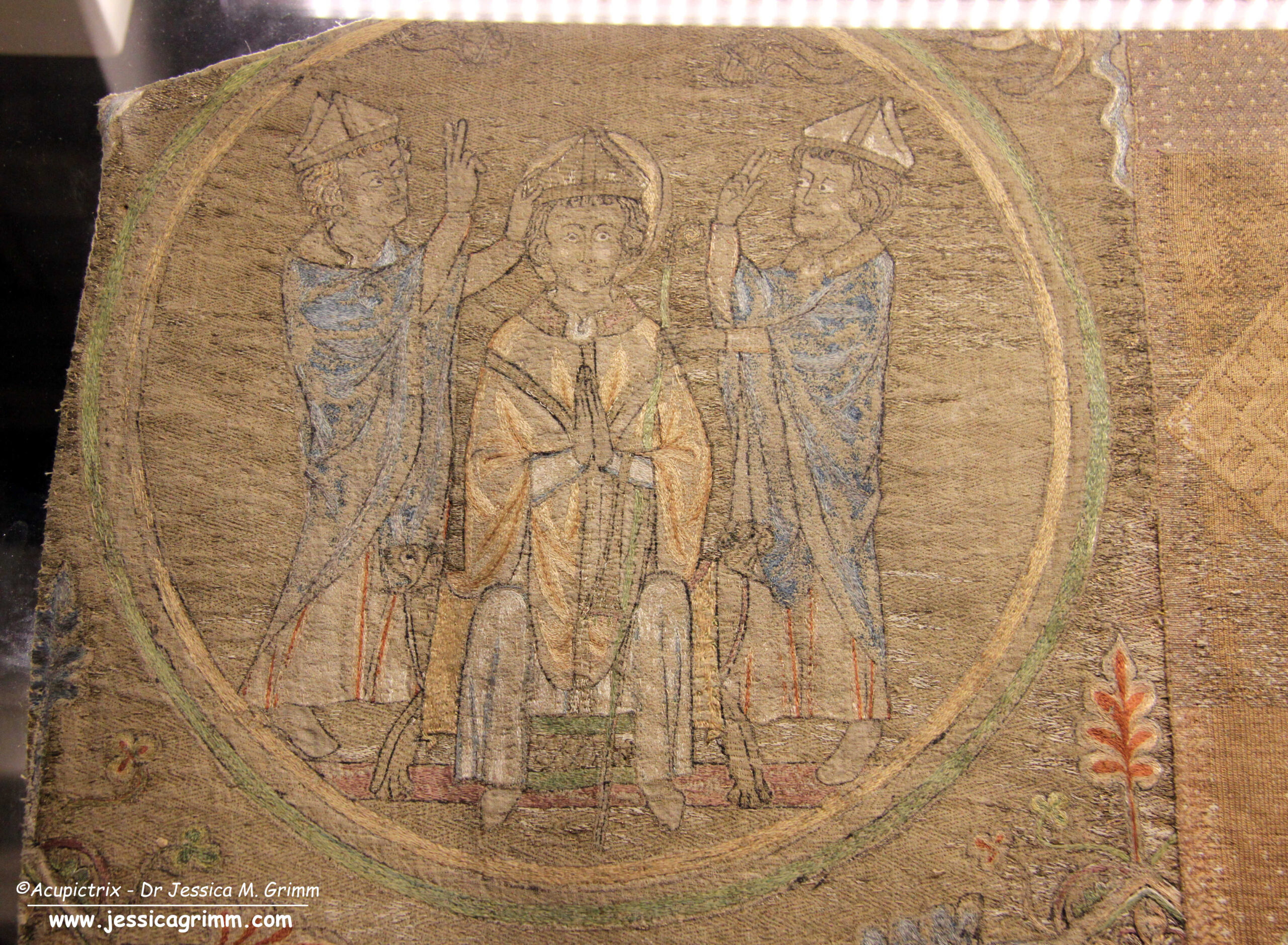
A couple of weeks ago, I was fortunate enough to finally visit the Cathedral Treasury of Anagni near Rome, Italy. The treasury houses several pieces of Opus anglicanum, not only the namesake cope. One of these pieces is the chasuble, which you can see below. However, this vestment started life as a dalmatic. It was…
-
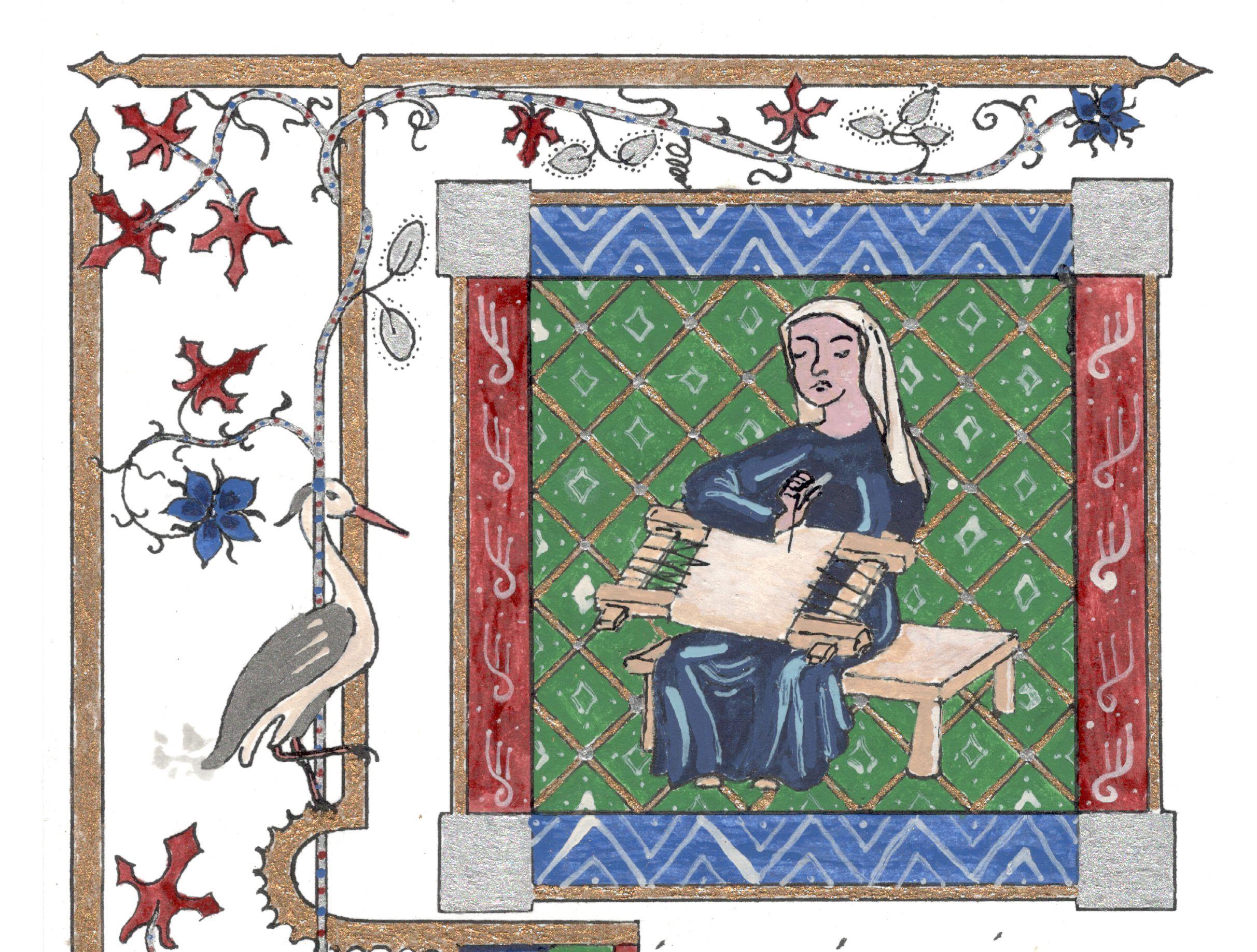
In the 80s, we had an art historian in the Netherlands who started to systematically trawl through historical records to find late medieval and early modern embroiderers and embroidery guilds. She published a couple of great articles on the topic. However, the large overview publication she promised in her 1987 article never saw the light…
-
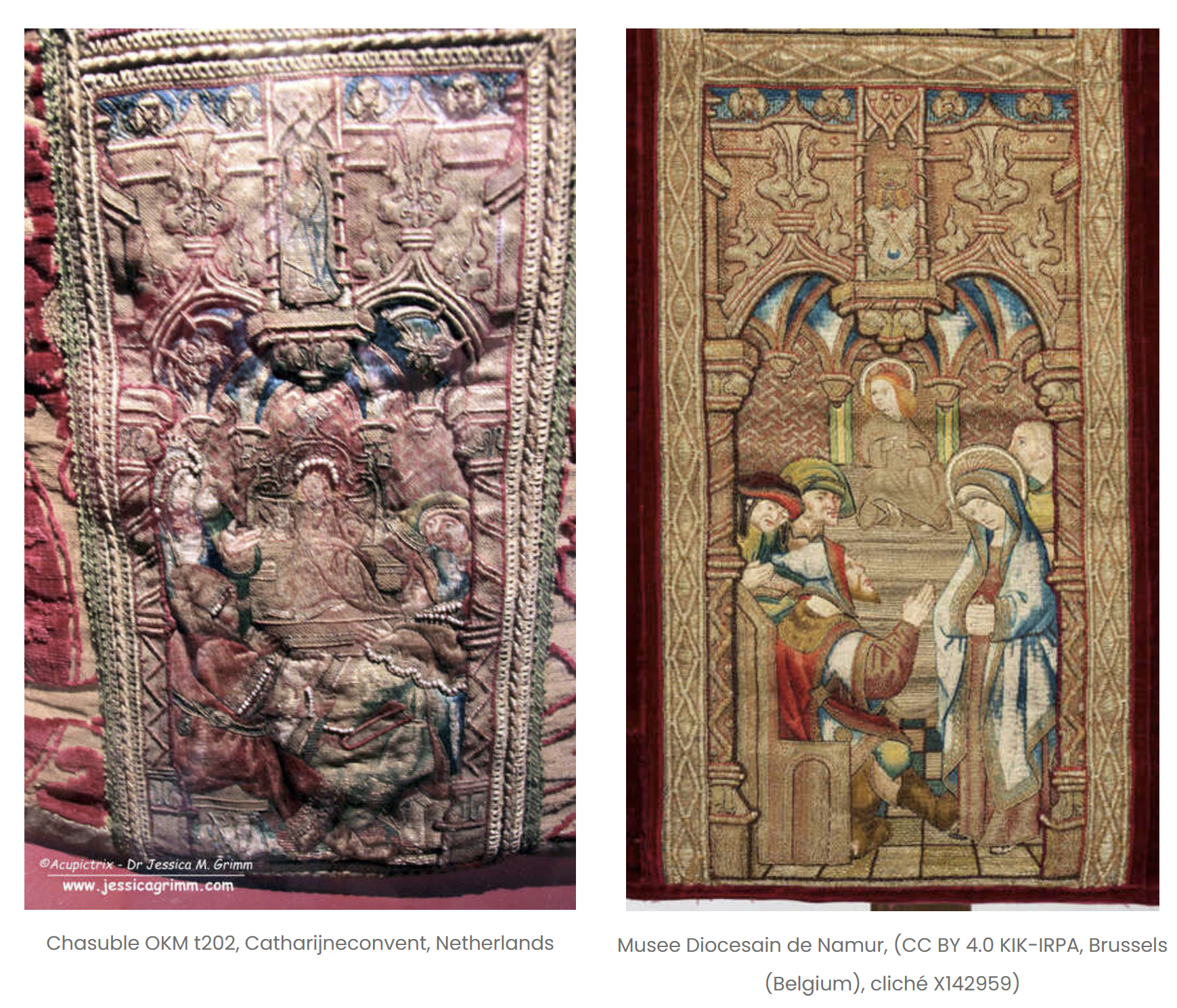
Last week, we looked at five different embroidered versions of the same Adoration of the Magi design. By changing materials and embroidery techniques, these late 15th and early 16th century embroideries look quite different from each other. The scene was part of four chasubles and a loose chasuble cross. But what about the other scenes…
-
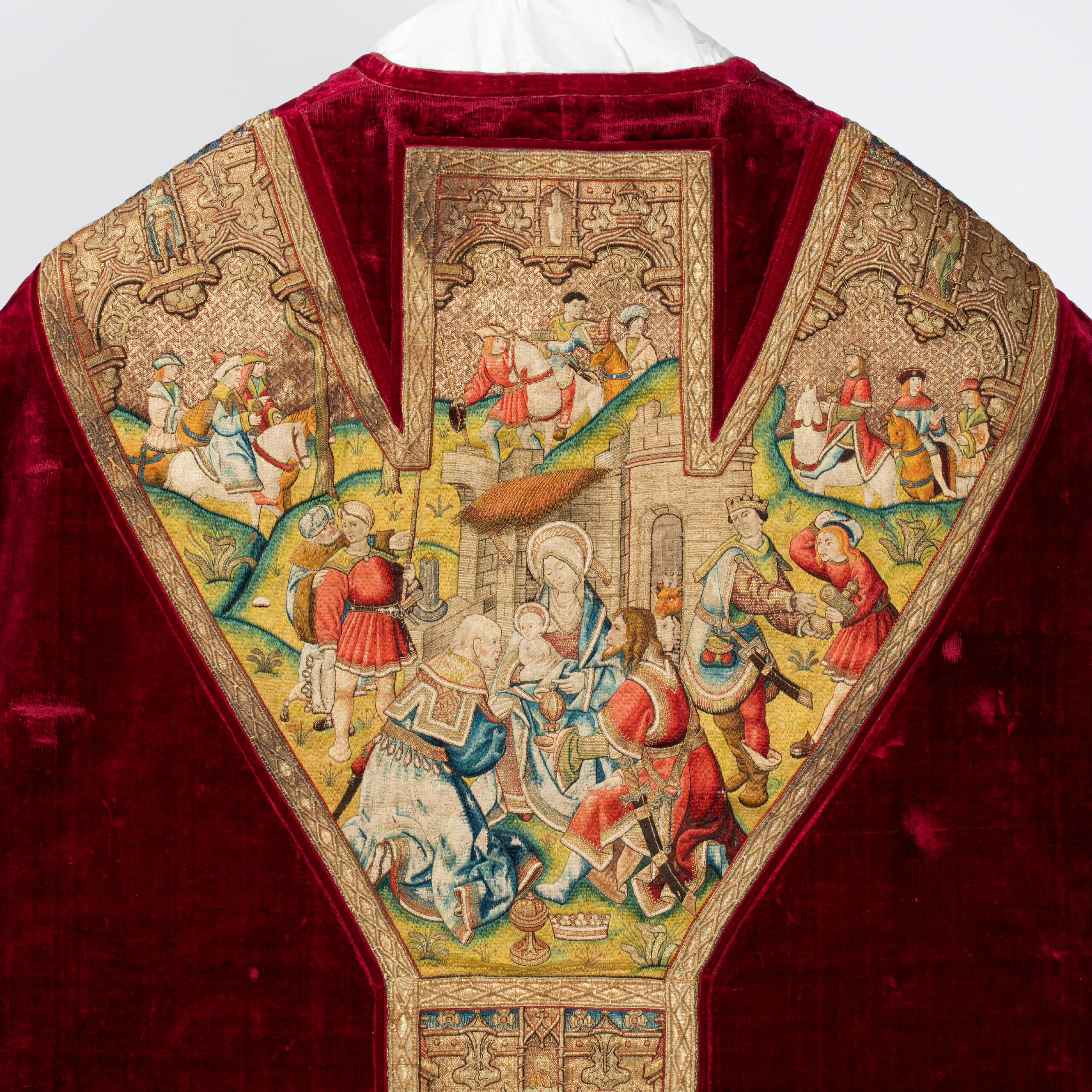
If you have followed this blog for a while, you already know that medieval goldwork embroidery was mass-produced. The designs were used more than once, sometimes even on the same vestment. Survived have mainly the simpler single-figure orphreys or the, possibly block-printed, naive embroidered scenes from Germany. But that’s not all. Even very complex scenes…
-
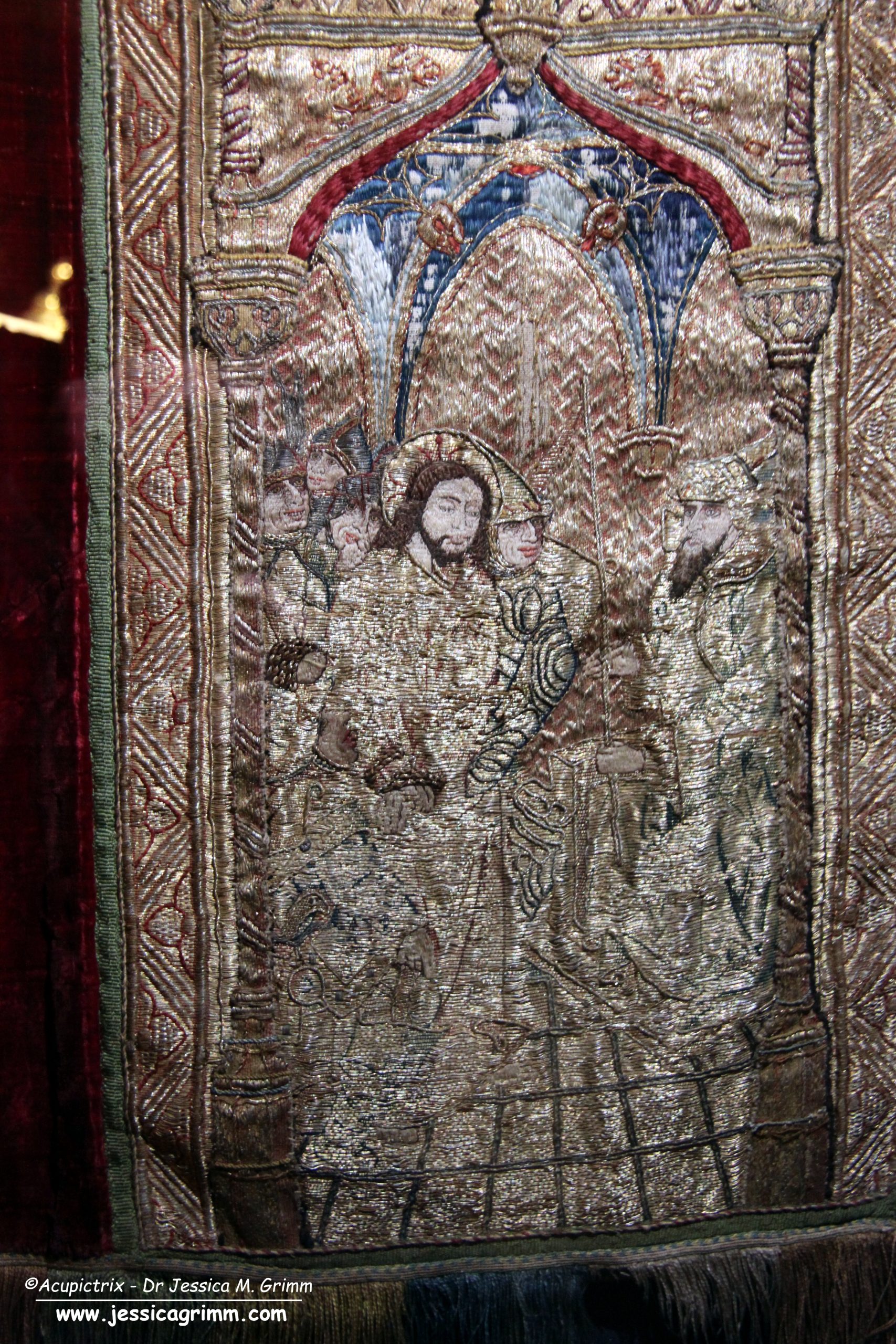
Last week, I wrote about the embroidered late medieval vestments on display in the St Nicolai Church in Kalkar. We looked in depth at the richly embroidered chasuble donated by Wolter van Riswick in AD 1530. This week, we’ll examine a splendidly embroidered cope and dalmatic, also kept in the church in Kalkar. These vestments…
-
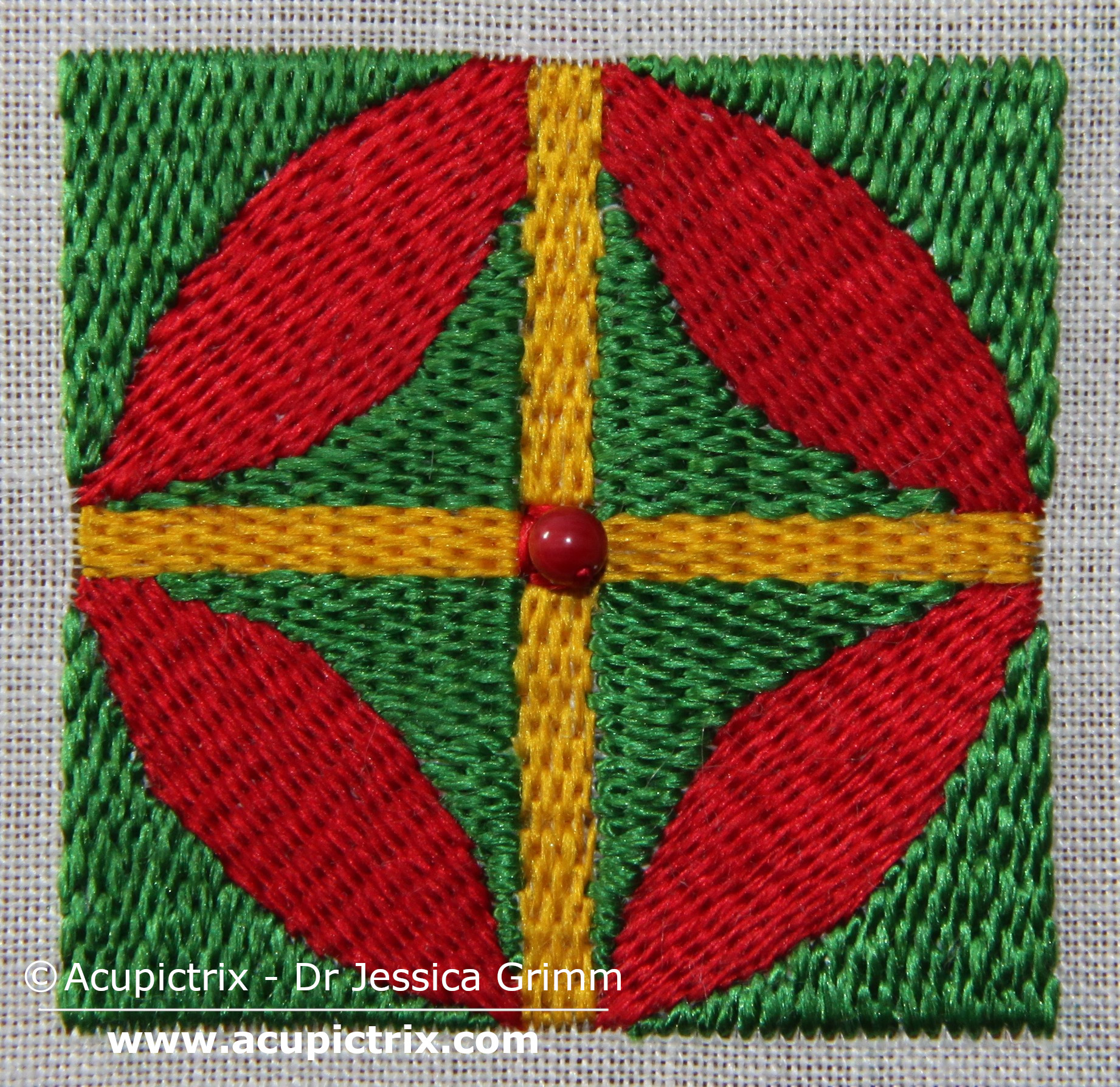
Last week, I discussed some Opus anglicanum pieces that show underside couched silk worked in a brick pattern. I wondered what the benefits were of using underside couching instead of traditional brick stitch. As I had done underside couching with a metal thread before, I imagined that underside couching with silk would be equally slow and cumbersome.…
